Latest Posts by epic-flight - Page 7
View these celestial beauties taken by the Hubble Space Telescope and released as a set of views in a modern day “Messier Catalog."
Spotting comets was all the rage in the middle of the 18th century, and at the forefront of the comet hunt was a young French astronomer named Charles Messier. In 1774, in an effort to help fellow comet seekers steer clear of astronomical objects that were not comets (something that frustrated his own search for these elusive entities), Messier published the first version of his “Catalog of Nebulae and Star Clusters,” a collection of celestial objects that weren’t comets and should be avoided during comet hunting. Today, rather than avoiding these objects, many amateur astronomers actively seek them out as interesting targets to observe with backyard telescopes, binoculars or sometimes even with the naked eye.
Hubble’s version of the Messier catalog includes eight newly processed images never before released by NASA. The images were extracted from more than 1.3 million observations that now reside in the Hubble data archive. Some of these images represent the first Hubble views of the objects, while others include newer, higher resolution images taken with Hubble’s latest cameras.
Learn more: https://www.nasa.gov/content/goddard/hubble-s-messier-catalog
Make sure to follow us on Tumblr for your regular dose of space: http://nasa.tumblr.com.

Apollinaris Patera, an ancient shield volcano on Mars, rises about 3 miles into the thin atmosphere while water-ice clouds crowd around its summit. Observed by the Mars Global Surveyor space probe in 1999. (NASA/APOD)
(Credit: Malin Space Science Systems, MGS, JPL, NASA)



2014 | Interstellar | Official Concept Art | Source: “Interstellar: Beyond Time and Space” Book by Mark Cotta Vaz

A crater on Mars, observed by the Mars Reconnaissance Orbiter: “This impact crater appears relatively recent as it has a sharp rim and well-preserved ejecta, the material thrown out of the crater when a meteorite hit Mars. The steep inner slopes are carved by gullies and include possible recurring slope lineae (known as RSL) on the equator-facing slopes. RSL could be a sign that water, its freezing point lowered by a high concentration of salt, could be seeping down these steep slopes. MRO has seen RSL appear in warmer seasons and disappear in cooler seasons in a few locations on Mars, indicating a planet with plenty of active processes.” (NASA)

Overhead view of the caldera at the summit of Olympus Mons on Mars, the tallest volcano in the Solar System. View from the Mars Express space probe. (NASA)

A selection orbs of the Solar System: Mercury, Venus, Earth (and Moon), Mars, Jupiter, Saturn, Uranus, Neptune. The spacecraft responsible for these images are as follows:
Mercury was photographed by Mariner 10.
Venus was imaged by the Magellan spacecraft’s radar.
Earth and its Moon were photographed by Galileo.
Mars Global Surveyor took the image of Mars.
Jupiter was photographed by Cassini as it traveled to Saturn.
Saturn, Uranus and Neptune images were taken by the twin Voyager spacecraft.
(NASA)

Peering deep into the core of the Crab Nebula, this close-up image reveals the beating heart of one of the most historic and intensively studied remnants of a supernova, an exploding star. The inner region sends out clock-like pulses of radiation and tsunamis of charged particles embedded in magnetic fields.
The neutron star at the very center of the Crab Nebula has about the same mass as the sun but compressed into an incredibly dense sphere that is only a few miles across. Spinning 30 times a second, the neutron star shoots out detectable beams of energy that make it look like it’s pulsating.
The Hubble Space Telescope snapshot is centered on the region around the neutron star (the rightmost of the two bright stars near the center of this image) and the expanding, tattered, filamentary debris surrounding it. Hubble’s sharp view captures the intricate details of glowing gas, shown in red, that forms a swirling medley of cavities and filaments. Inside this shell is a ghostly blue glow that is radiation given off by electrons spiraling at nearly the speed of light in the powerful magnetic field around the crushed stellar core.
Read more about this image HERE.
Make sure to follow us on Tumblr for your regular dose of space: http://nasa.tumblr.com

The sun sets on Mars, April 15, 2015, observed by the Mars Curiosity Rover stationed at Gale Crater. (NASA/Jet Propulsion Laboratory)

An impressive impact crater on Mars, observed by NASA’s Mars Reconnaissance Orbiter, November 19, 2013. (NASA)
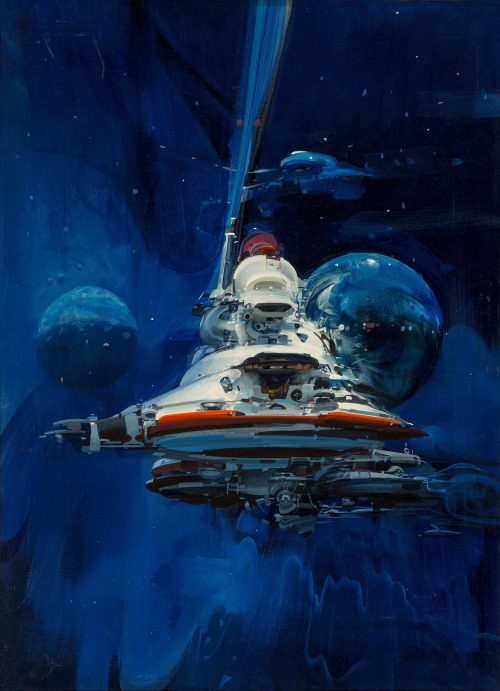
JOHN BERKEY Unknown Acrylic/Casein 29.5″ x 21.625
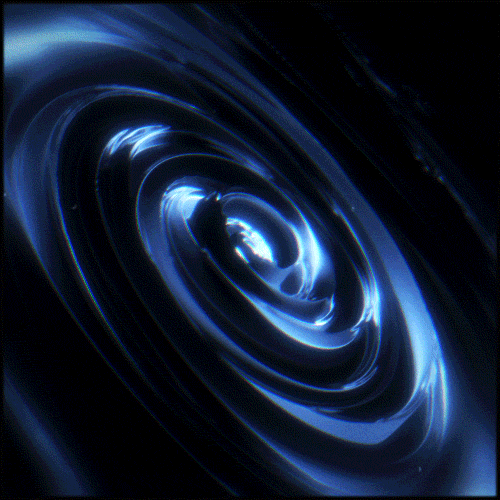
Space & Sound.
You can get this GIF as a phone wallpaper for free through the Zedge app.
You can also get this GIF as a looping 1080p video if you support me on Patreon.
Twitter / Instagram / Shop / Gumroad / Patreon / Zedge

O_o When we peer deep into space, we don’t expect to find something staring back at us…
This galactic ghoul, captured by our Hubble Space Telescope, is actually a titanic head-on collision between two galaxies. Each “eye” is the bright core of a galaxy, one of which slammed into another. The outline of the face is a ring of young blue stars. Other clumps of new stars form a nose and mouth.
Although galaxy collisions are common most of them are not head-on smashups like this Arp-Madore system. Get spooked & find out what lies inside this ghostly apparition, here.
Make sure to follow us on Tumblr for your regular dose of space: http://nasa.tumblr.com
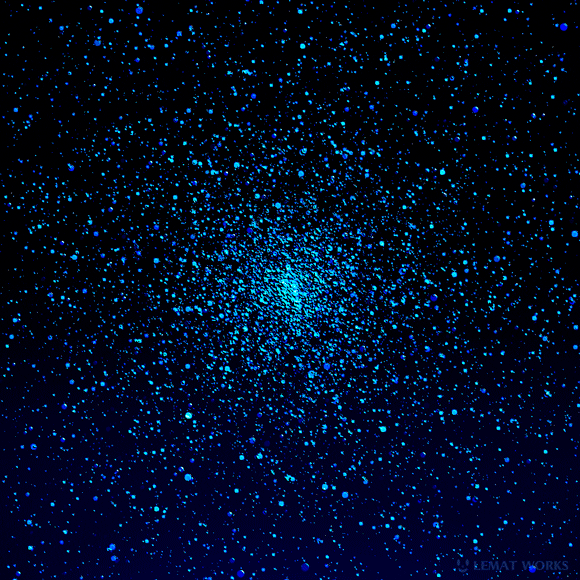
Produced by LEMAT WORKS
✨ Chill Space1 2 3 / Twinkle Night2 3 13 / Neon Space3 / Portfolio ✨

VMF-422 Corsairs

ArtStation - Halo Warfleet - book cover, by sparth .
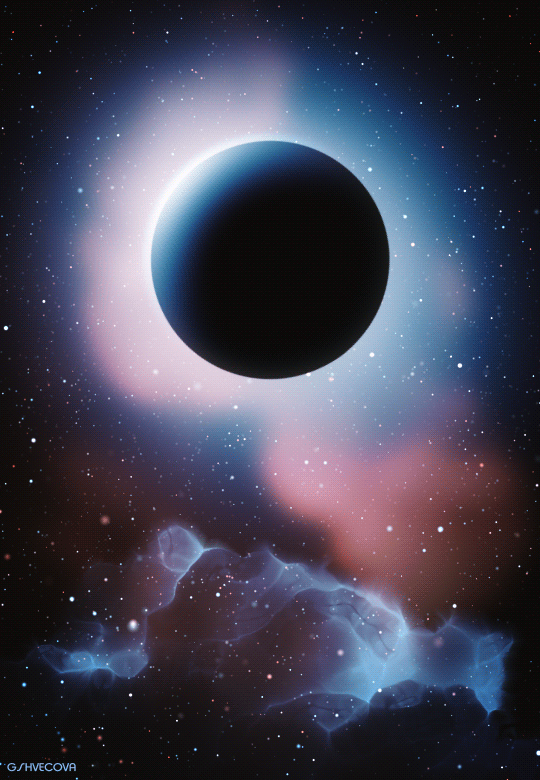
Art G.Shvecova (Design graphics - Black-hole_080218)

Meirl

USS Sulaco Military Starship
Movie: Aliens UI Design: Fantasy II Film Effects, L.A. Effects Group, Stan Winston Studio

What caused this outburst of this star named V838 Mon? For reasons unknown, this star’s outer surface suddenly greatly expanded with the result that it became the brightest star in the entire Milky Way Galaxy in January 2002. Then, just as suddenly, it faded. A stellar flash like this had never been seen before – supernovas and novas expel matter out into space.
Although the V838 Mon flash appears to expel material into space, what is seen in the above GIF from the Hubble Space Telescope is actually an outwardly moving light echo of the bright flash.
In a light echo, light from the flash is reflected by successively more distant rings in the complex array of ambient interstellar dust that already surrounded the star. V838 Mon lies about 20,000 light years away toward the constellation of the unicorn (Monoceros), while the light echo above spans about six light years in diameter.
Credit: NASA, ESA
To discover more, visit: https://www.nasa.gov/multimedia/imagegallery/image_feature_2472.html

By artist Marc Simonetti.

Comet NEAT revealed in close-up by the WIYN 0.9-meter telescope at Kitt Peak National Observatory near Tucson, Arizona on May 7, 2004.
(HubbleSite)

Wispy remains of a supernova explosion hide a possible ‘survivor.’ Of all the varieties of exploding stars, the ones called Type Ia are perhaps the most intriguing. Their predictable brightness lets astronomers measure the expansion of the universe, which led to the discovery of dark energy. Yet the cause of these supernovae remains a mystery. Do they happen when two white dwarf stars collide? Or does a single white dwarf gorge on gases stolen from a companion star until bursting? If the second theory is true, the normal star should survive. Astronomers used the Hubble Space Telescope to search the gauzy remains of a Type Ia supernova in a neighboring galaxy called the Large Magellanic Cloud. They found a sun-like star that showed signs of being associated with the supernova. Further investigations will be needed to learn if this star is truly the culprit behind a white dwarf’s fiery demise.
This supernova remnant is located 160,000 light-years from Earth. The actual supernova remnant is the irregular shaped dust cloud, at the upper center of the image. The gas in the lower half of the image and the dense concentration of stars in the lower left are the outskirts of a star cluster.
Image credit: NASA, ESA and H.-Y. Chu (Academia Sinica, Taipei)

John Berkey cover art for The Plain Truth, April 1978.

Arrival at an Exoplanet, 1983, by David A. Hardy, painted in gouache originally for the cover of Analog Science Fiction/Fact, June 1983.”
(AstroArt)

A 1979 work by space artist Don Dixon shows dwarf planet Pluto as seen from one of its moons. (Cosmographica)
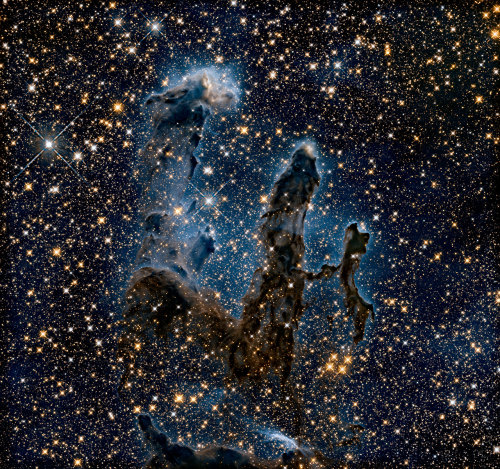
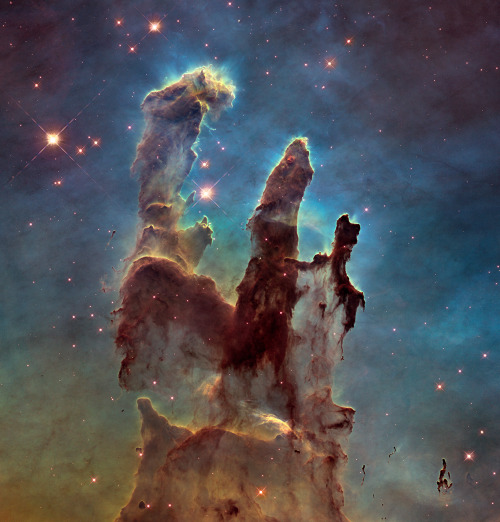
Sometimes… there’s more than meets the eye. 👀 You’re looking at two very different takes on an iconic image.
Human eyes can see only a small portion of the range of radiation given off by the objects around us. We call this wide array of radiation the electromagnetic spectrum, and the part we can see visible light.
In the first image, researchers revisited one of Hubble Space Telescope’s most popular sights: the Eagle Nebula’s Pillars of Creation. Here, the pillars are seen in infrared light, which pierces through obscuring dust and gas and unveil a more unfamiliar — but just as amazing — view of the pillars. The entire frame is peppered with bright stars and baby stars are revealed being formed within the pillars themselves. The image on the bottom is the pillars in visible light.
Image Credit: NASA, ESA/Hubble and the Hubble Heritage Team
Make sure to follow us on Tumblr for your regular dose of space: http://nasa.tumblr.com.

Rendezvous of Apollo command and lunar modules over the Moon, illustrated by Robert McCall.



